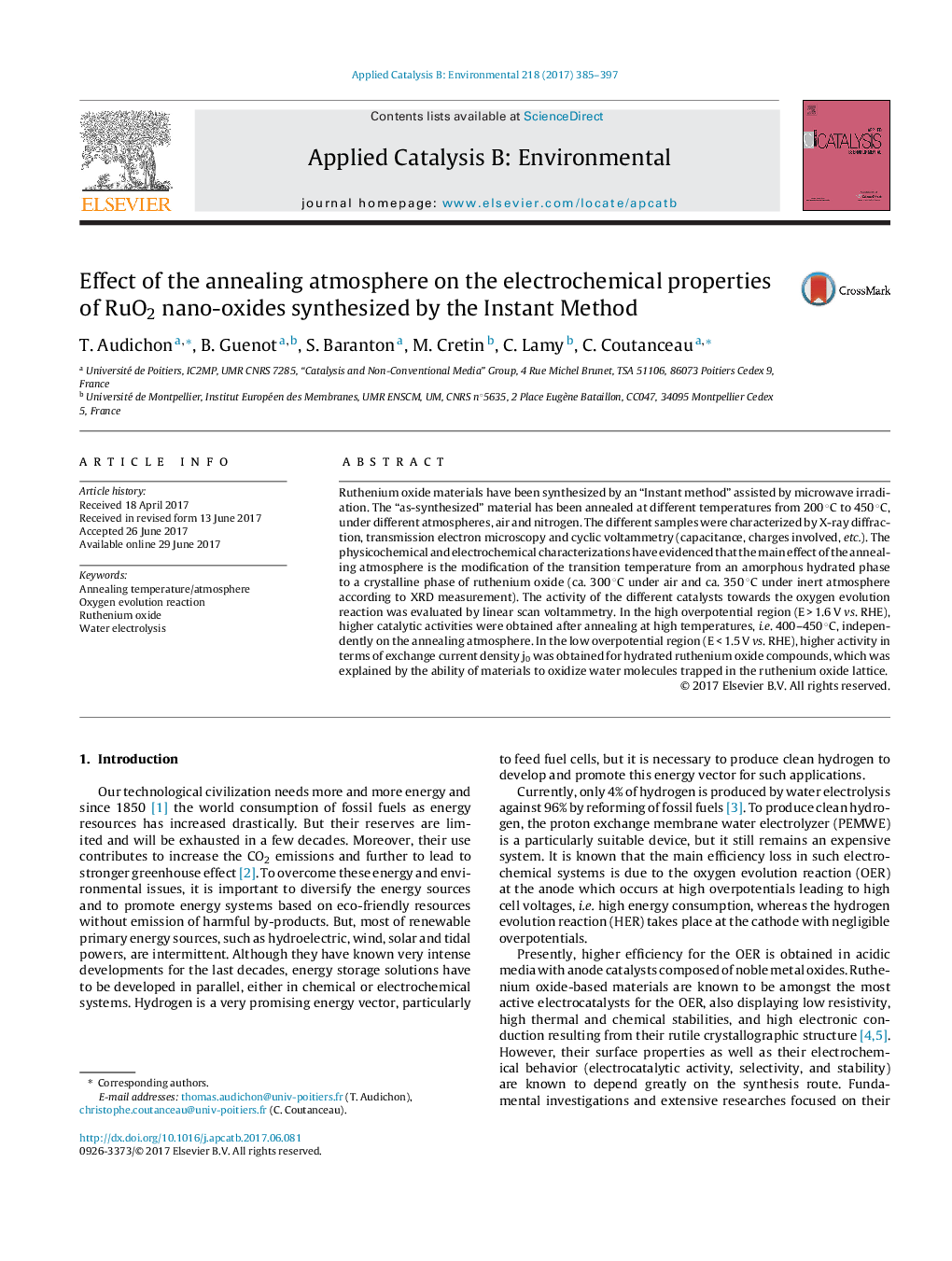| کد مقاله | کد نشریه | سال انتشار | مقاله انگلیسی | نسخه تمام متن |
|---|---|---|---|---|
| 6453761 | 1418802 | 2017 | 13 صفحه PDF | دانلود رایگان |

- Development of a microwave assisted instant method for RuO2 nanocrystal synthesis.
- Atmosphere changes hydrated amorphous to crystalline phase transition temperature.
- Activity is independent on annealing atmosphere for catalysts treated at 400-450 °C.
- Metal oxide syntheses can be performed under inert atmosphere.
- Oxidation of water molecules trapped in RuO2 cell improves water oxidation kinetics.
Ruthenium oxide materials have been synthesized by an “Instant method” assisted by microwave irradiation. The “as-synthesized” material has been annealed at different temperatures from 200 °C to 450 °C, under different atmospheres, air and nitrogen. The different samples were characterized by X-ray diffraction, transmission electron microscopy and cyclic voltammetry (capacitance, charges involved, etc.). The physicochemical and electrochemical characterizations have evidenced that the main effect of the annealing atmosphere is the modification of the transition temperature from an amorphous hydrated phase to a crystalline phase of ruthenium oxide (ca. 300 °C under air and ca. 350 °C under inert atmosphere according to XRD measurement). The activity of the different catalysts towards the oxygen evolution reaction was evaluated by linear scan voltammetry. In the high overpotential region (E > 1.6 V vs. RHE), higher catalytic activities were obtained after annealing at high temperatures, i.e. 400-450 °C, independently on the annealing atmosphere. In the low overpotential region (E < 1.5 V vs. RHE), higher activity in terms of exchange current density j0 was obtained for hydrated ruthenium oxide compounds, which was explained by the ability of materials to oxidize water molecules trapped in the ruthenium oxide lattice.
162
Journal: Applied Catalysis B: Environmental - Volume 218, 5 December 2017, Pages 385-397